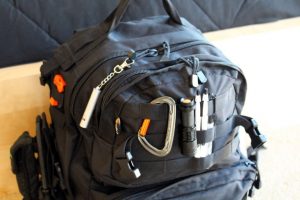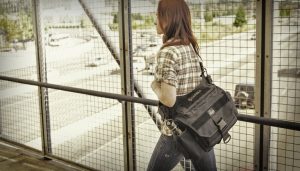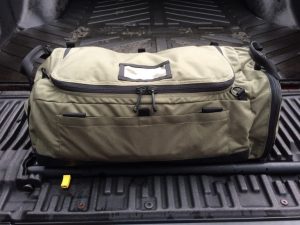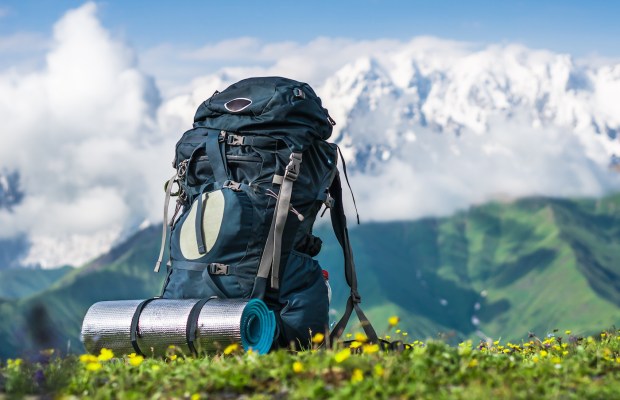Prepping is not an easy job as you always have to be prepared for the worst. Still, while everyone talks about the supplies you need to carry no one actually specifies what to carry all this stuff in. Your emergency bag is just as important as the supplies inside it, so pay close attention to what you are buying.
The good news is that there are tons of bags out there that will do well as emergency bags. The bad news – it can often be intimidating when deciding which one to choose. This is why we’re going to go over the basics of emergency bags with you, so you know exactly which type you should purchase for different situations.
The Features You Should Be Looking For
Make sure your emergency bag has the following properties:
Lightweight: The importance of an emergency bag’s weight cannot be over-stressed. You don’t know how long you’ll be carrying it around, so you need something which is lightweight and thus will not hinder your movement. You need to put a lot of survival gear in there, so the bag itself should not add much to the weight.
Some bags can weigh as much as one-third of your body weight, once filled. While these bags are spacious and you can pack a lot of supplies in them, they are difficult to haul around for a long time. It is better, therefore, to choose a lighter model.
Subtle is Best: Sure, pink or orange is your favorite color, but when it comes to choosing an emergency bag, go for a dull, solid color. Your bag should not be screaming, “Look at me!” Black works perfectly because it is not visible at night, and also it does not draw attention to itself. In an emergency situation, you do not want people to focus on your gear and blending in with the surroundings is your best bet.
Internal Frame: An internal frame backpack is a better option because it lets you move freely. You can walk, run, jump or climb without the bag hindering your progress. This kind of bag hugs your back and thus feels more comfortable.
Waterproof: Make sure your bag is waterproof. After all, you do not want all your supplies to get wet when it rains or snows.
Size: Don’t go for something which is too big. Again, it draws too much attention to itself and you might find yourself in trouble as people try to rob you thinking you have a ton of supplies in there. Also, the larger the size, the more difficult it will be to carry the bag. At the same time, the bag should be spacious enough that it lets you carry everything inside.

A good idea is to measure your own height from shoulders to the torso. Your bag should be around this big. If it is bigger, it will ride below your hips and thus bang against them every time you move. If it is smaller, it will be too high up on your back and will not feel comfortable.
Durability: The bag you buy should be built to withstand the elements. If a zip breaks, or a strap tears, you will be in huge trouble. Never compromise on the durability of a bag, even if you need to spend more. The fabric of the bag should also be tough.
Compartments: Bags which have many zippered compartments are easy to handle as you can organize your goods. That way, whenever you need anything, you do not have to turn all the contents topsy-turvy to find it. It also lets you prioritize your stuff so you know where the important things are.
Comfort Level: Your emergency bag is something you will be wearing for extended periods of time, as in a bug out situation you will constantly be on the move. Before you purchase your bag, wear it to see if it adjusts well to your body shape and structure. The straps should be adjustable and comfortable; they should not dig into your shoulders and waist. The bag should lie comfortably across your back and not bounce around too much when you move.
It should also be easy to wear and remove your bug out bag. You don’t want to spend ages putting it on and adjusting the straps every single time.
Types of Bags

Let’s talk about the different types of emergency bags in the market, and which one will suit your specific needs.
Go Bag or 72- Hours Bag
This bag will sustain you for three days, and is best used in case of a natural disaster, when help might be on the way. The go bag is only large enough to carry three days’ worth of food and water supplies. You can also pack some essential tools (like a knife) and a first aid kit, but that is basically all you need.
Car Bag
This kind of bag is meant for people who travel via car a lot. The bag will have tools and supplies to repair your car, like a jumper cable and tire repair tools, so if you are stranded on the road, you can fix your vehicle and get going. The bag should also have other essential items, like food and water which will sustain you for about a day, in case you cannot fix your car and thus have to wait for help.
Bug Out Bag
A bug out bag is something which will sustain you for a long time. This bag is meant to carry supplies which will help you survive in any dangerous situation. The bag not only has food and water, it also has supplies which will help you make it on your own in the wilderness.
If the situation gets so bad that you need to leave your house and go to the wild to survive, alone, you need this bag. Here, you will have cooking supplies, hunting gear, change of clothes, fire starters, a knife, medical kit and other goods which will help you.
Duffel Bag

A duffel bag can be used as an emergency bag if you have nothing else at hand. It is spacious and large and thus you can fit a lot of your gear inside. However, keep in mind that it is not the ideal option. You cannot compartmentalize the goods in a duffel bag, and just have to stuff everything in the same big space. This can prove to be rather cumbersome if you need something which you packed in the bottom of your bag.
Get your Emergency Stuff Ready
You never know when disaster might strike, so there is no time like the present to prepare yourself. Get a great bug out bag and pack your supplies so you can be ready to leave in a few minutes, if you need to. Remember, surviving in the wild is difficult, but not impossible. If you have the right equipment, you can certainly make it.





